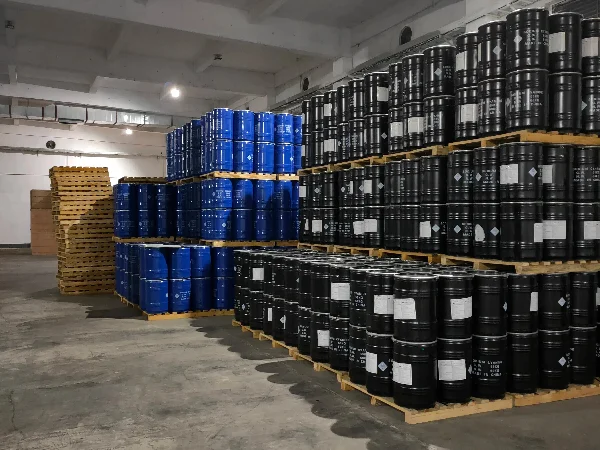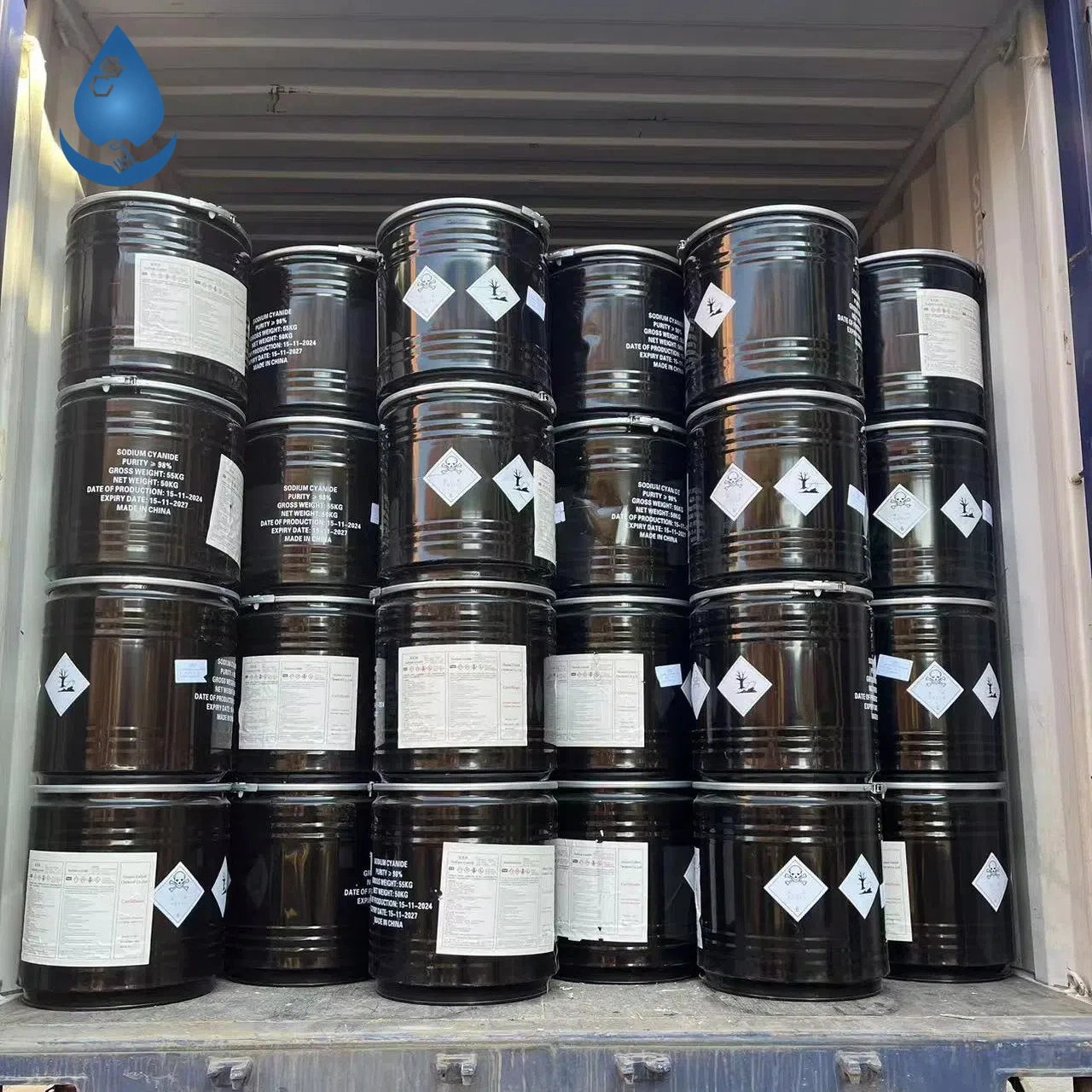
Sodium cyanide (NaCN) is the workhorse reagent in modern gold heap leaching—offering high recovery rates, low chemical consumption, and excellent economics. Whether you’re evaluating a new deposit or optimizing an existing operation, following a systematic approach from ore sampling through to tailings detox is crucial. Below, we break down each stage into clear steps, rich in practical detail yet straightforward enough for newcomers.

1. Ore Sampling & Pre-Treatment: Laying the Foundation
Representative Sampling
Why it matters: Your laboratory and pilot tests are only as good as the samples you feed them.
How to do it: Divide your deposit by rock type (oxide vs. sulfide) and grade (high, medium, low). Take multiple, evenly spaced samples from each zone so that variations in gold form, clay content, and impurities (copper, arsenic, sulphur, carbon) are fully captured.
Crushing & Agglomeration
Target size: Crush ore to a uniform 12–25 mm so the cyanide solution can percolate easily.
When to agglomerate: If the ore is dusty or rich in fine clay (<75 µm particles >10%), add 3–5% cement or lime plus about 20–25% moisture. Mix to form 3–15 mm granules—this prevents preferential flow paths (“channelling”) and yields a more uniform heap.
Basic Mineralogical Study
Chemical assays: Complete elemental scans (major and trace), gold assays, and phase analysis for sulfides (e.g., copper, arsenic, antimony species).
Gold occurrence: Identify free gold vs. gold locked inside pyrite or galena; the latter often needs an oxidative pre-treatment.
Clay and permeability: High clay content reduces permeability—either agglomerate or blend with coarser ore.
Grain size effect: Finer gold (<38 µm) dissolves much faster (under 48 h) than coarser gold (0.125–0.25 mm may take up to 30 days).

2. Cyanide Solution Preparation: Balancing Strength & Safety
Reagent Concentration
Initial leach: 0.08–0.10% NaCN (0.8–1.0 kg/m³) for aggressive gold attack over the first 7–10 days.
Maintenance leach: 0.04–0.06% NaCN at a reduced flow for the next 20–30 days.
Final rinse: 0.02–0.03% NaCN or plain water for 5–7 days to flush out residual gold.
pH Control
Target range: 10.5–11.0
Why: Prevents toxic HCN gas and keeps the gold–cyanide complex stable.
How: Add quicklime (CaO) or hydrated lime (Ca(OH)₂) and monitor pH at least twice daily.
Water Quality
Ideal: Soft water with Ca²⁺/Mg²⁺ < 50 mg/L
Reason: Hardness ions can precipitate metal–cyanide complexes, wasting cyanide and reducing gold recovery.

3. Heap Construction & Irrigation: Building a Robust System
Liner & Underdrain
Install a high-density polyethylene (HDPE) geomembrane with perforated collection pipes to capture every drop of pregnant leach solution (PLS).
Layered Stacking
Lift thickness: 1.5–2 m
Compaction: Light—enough to keep the heap stable but not so much that permeability suffers.
Irrigation Layout
Use drip or microspray tubing spaced evenly across each lift. This ensures uniform reagent distribution and avoids dry pockets.
Aeration Channels
Leave small air gaps or insert perforated pipes to maintain dissolved oxygen levels (≥4 mg/L) essential for gold oxidation.

4. Leaching Phases: Precise, Phased Control
| Phase | Flow Rate (L/m²·h) | NaCN Conc. | Main Objective |
| Pre-wash | 10–15 | 0 | Remove soluble salts; protect cyanide |
| Initial | 20–30 | 0.08–0.10% | Rapid surface attack on gold grains |
| Maintenance | 10–20 | 0.04–0.06% | Continue steady gold recovery |
| Final rinse | 5–10 | 0.02–0.03%/water | Flush residual gold |
Total cycle: Typically 30–50 days, adjusted by ore hardness and gold liberation characteristics.
Solution recycle: Stripped barren solution is re-pumped to the heap to minimize fresh cyanide usage.

5. Monitoring & Recovery: Closing the Loop
Daily Checks
pH: 10.5–11.0 (re-lime if <10.3)
Free & WAD CN⁻: 100–250 ppm free; track weak-acid dissociable cyanide.
Dissolved oxygen: ≥4 mg/L in PLS
Gold grade in PLS: Plot the recovery curve to determine when to end the cycle.
Heap permeability: Watch for drops in flow rate that signal clogging or channelling.
Gold Recovery
Carbon adsorption (CIC/CIP): PLS flows through activated carbon which adsorbs Au–CN complexes.
Elution: Strip gold from carbon using hot (70–80 °C) NaOH–NaCN solution.
Final recovery: Electrowinning or zinc dust precipitation yields gold mud ready for smelting.
Tailings Detox
Use the SO₂–air (INCO) process or hydrogen peroxide to reduce WAD CN⁻ below 0.1 mg/L before discharge or stacking.

6. Safety & Environmental Stewardship: Zero Compromise
PPE: Always wear chemical-resistant gloves, eye protection, face shields, and respirators when handling NaCN.
HCN prevention: Maintain pH ≥ 10.5; monitor for any gas buildup in enclosed areas.
Emergency readiness: Keep cyanide antidote kits on hand and train staff in first-aid and spill response.
Regulatory compliance: Follow national cyanide management codes, maintain detailed logs, and conduct regular environmental monitoring of soil and water around the heap.
Final Thoughts
A successful sodium cyanide heap-leaching operation hinges on meticulous attention at every stage: representative ore sampling, precise reagent formulation, robust heap design, phased leaching control, rigorous monitoring, and unwavering commitment to safety and environmental protection.
Shaanxi United Chemical Co., Ltd. brings over 30 years of NaCN production expertise and a dedicated technical support team to ensure your gold operation achieves maximum recovery with minimal environmental footprint.
Contact Us
Address: Room 1808, Jinhui Global Center, Qujiang New District, Xi’an, Shaanxi, China
Email: [email protected]
Phone: +86 173 9270 5576
Empower your gold extraction with proven, efficient, and safe NaCN heap-leaching technology!
- Random Content
- Hot content
- Hot review content
- industry Electric Detonator
- Potassium Permanganate – Industrial Grade
- Sodium Persulfate,Sodium Persulphate,supplier 99.00%
- calcium chloride anhydrous for food
- Triethanolamine(TEA)
- 2-Hydroxyethyl acrylate (HEA)
- Adipic acid 99% used as the material of nylon 66
- 1Discounted Sodium Cyanide (CAS: 143-33-9) for Mining - High Quality & Competitive Pricing
- 2China's New Regulations on Sodium Cyanide Exports and Guidance for International Buyers
- 3Sodium Cyanide 98% CAS 143-33-9 gold dressing agent Essential for Mining and Chemical Industries
- 4International Cyanide(Sodium cyanide) Management Code - Gold Mine Acceptance Standards
- 5China factory Sulfuric Acid 98%
- 6Anhydrous Oxalic acid 99.6% Industrial Grade
- 7Oxalic acid for mining 99.6%
- 1High Quality 99% Purity of Cyanuric chloride ISO 9001:2005 REACH Verified Producer
- 2Sodium Cyanide 98% CAS 143-33-9 gold dressing agent Essential for Mining and Chemical Industries
- 3 High-Quality Sodium Cyanide for Leaching
- 4Powdery emulsion explosive
- 5Industry Grade Electron grade 98% Sulfuric Acid H2SO4 Sulphuric Acid Battery Acid Industrial Sulfuric Acid
- 6Colloidal emulsion explosive
- 7sodium hydrosulfide 70% flakes used Mining Industry











Online message consultation
Add comment: